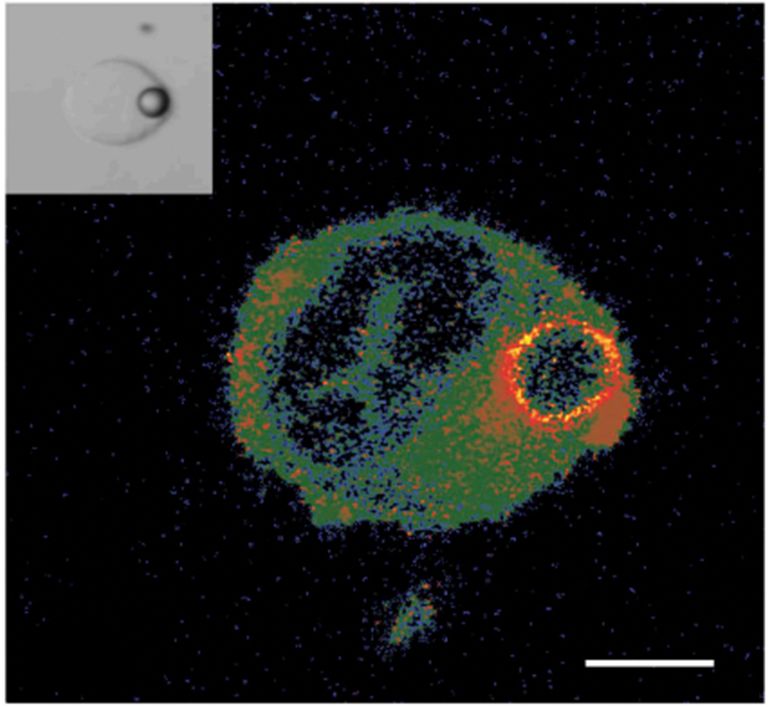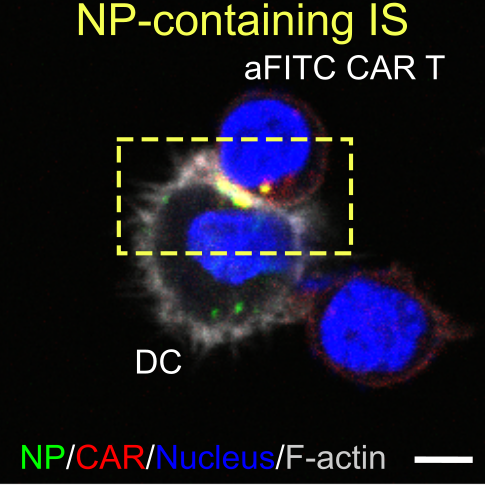Nanoparticle-Cell Interactions
EGF-EGFR binding in the Cell Membrane
We use gold and silver nanoparticles as optical labels for a variety of cellular uptake pathways, with a focus on the Epidermal Growth Factor (EGF). Epidermal Growth Factor Receptors (EGFR) are important cancer biomarkers, and advancing our understanding of their mechanisms is critical. Using the nanoparticles as optical labels increases the lifetime for analysis when compared to fluorescent markers, and results in sub-diffraction limited spatial monitoring, due to the distance dependency of the plasmon coupling for the particles. Additionally, spatial monitoring of the particles contributes to the mapping of the cellular membrane and the pathways that receptors activate within the cell.
Siglecs Protein Targeting
Siglecs are a family of lectins characterized by an amino-terminal V-set immunoglobulin domain that mediates sialic acid binding and variable numbers of C2-set immunoglobulin domains. Sialic acids are a family of nine-carbon acidic monosaccharides that occur naturally at the end of glycoconjugates, such as glycoproteins and glycolipids. Mammalian glycome contains numerous sialylated glycans that can be potentially recognized as ligands by Siglecs. Among them, it was discovered that binding of the monosialodihexosylgangliosid (GM3) to Siglec‐1 (Sialoadhesin, CD169) plays an important role in the glycoprotein‐independent sequestration of HIV‐1 particles in non-lysosomal virus‐containing compartments (VCCs) in CD169+ myeloid cells. It has been shown previously in our group that GM3-functionalized gold nanoparticles recapitulate key aspects of CD169-dependent HIV-1 uptake and trafficking in CD169-expressing dendritic cells and macrophages. Therefore, CD169 becomes a potential target utilizing the GM3-NPs for multiple therapeutic applications.

